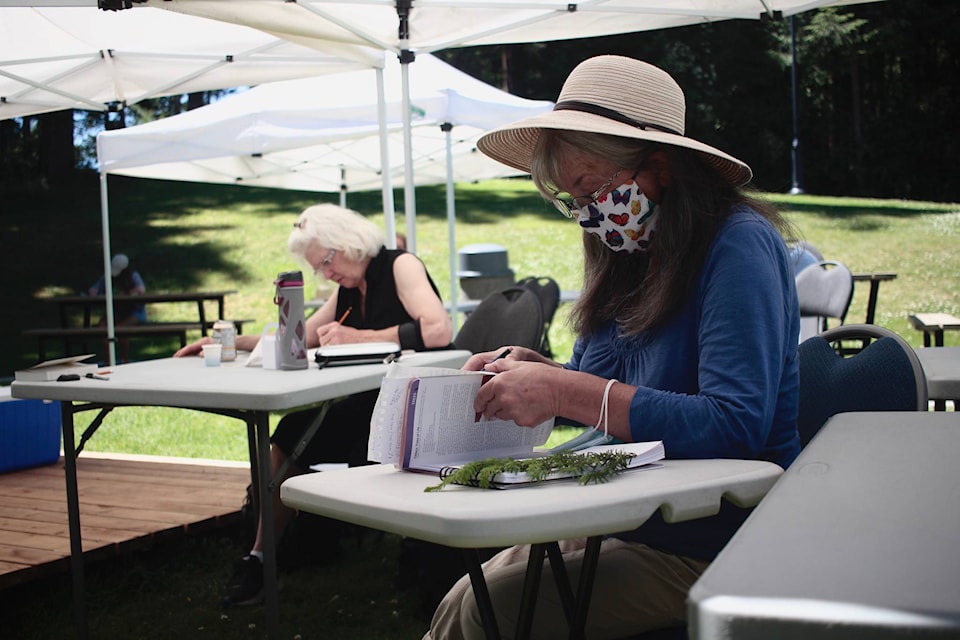Increasingly, the way we live is becoming more chemical-based — with much of how we eat, drink and use to treat our ailments created in a laboratory — however, as a group of Campbell Riverites learned over the weekend, beneficial, natural and traditional alternatives exist all around us.
Despite the intense heat, the mood was quiet and contemplative at the tables set up outside the Museum at Campbell River on Saturday. The event was about exploring native plants through medicine and the arts, and a small group of people were busy setting up art supplies and choosing plants from a table set out in the sun.
RELATED: Museum at Campbell River showcasing Native Plants and medicine
Museum programs manager Ken Blackburn said that “any opportunity we have to have discussions and… learn about traditional and Indigenous knowledge are definitely part of that reconciliation process of spending the time to listen and learn… Raising awareness of the natural environment around us and the native plants surrounding us it is really important to hear from an elder and knowledge keeper of traditional uses of things.”
In a morning session with We Wai Kai teacher Umagalis (June Johnson), the group learned about the importance and use of many plants to Indigenous Peoples of the west coast. The second half of the day was spent learning how to draw these plants, all while learning to appreciate slowing down and connecting with the natural world again.
“As June was talking about earlier today, we have a reliance on pharmaceuticals and chemistry in an environment that has become increasingly more chemical and toxin-based,” Blackburn said. “Anything that can help to swing back to more natural interventions in health is really positive.”
Plants like Oregon Grape, Devil’s Club and Cedar, all have medicinal uses that go back for thousands of years for the Indigenous peoples of the west coast. Blackburn explained that learning from the Indigenous peoples on whose lands we all live is an important step towards reconciliation.
“How do we go further, then, to encourage people to observe the natural world around them and encourage people to spend time to, in a sense, become more intimately aware of what these plants are? In many cases, they’re kind of considered to be weeds by the rest of the community, when in fact they have very strong intrinsic values,” he said. “The arts do that. The arts are one way you can encourage people to participate in processes that heighten awareness and understanding of the nature of what’s going on around them.”
That was the goal of the afternoon session, a botanical drawing lesson led by artist Clive Powsey.
“It’s the observational skills of looking closely at the characteristics of the nature of the plant. Then through drawing it, I think you get a heightened awareness of it. Ultimately, it’s an arts-based program to learn from elders and learn traditional knowledge and then encourage deeper investigation,” Blackburn said.
That is the idea behind the larger Art and Earth Festival, of which Saturday’s event was part. The idea is to give people a sense of culture and place, using the environment and the arts.
“It’s all about geography and learning the areas. It’s culture. Culture is the relationship between people and place,” said Blackburn. “I think it’s something we really need to learn.”
RELATED: Discovery Passage Aquarium wants your seashells
marc.kitteringham@campbellrivermirror.com
Like us on Facebook and follow us on Twitter
